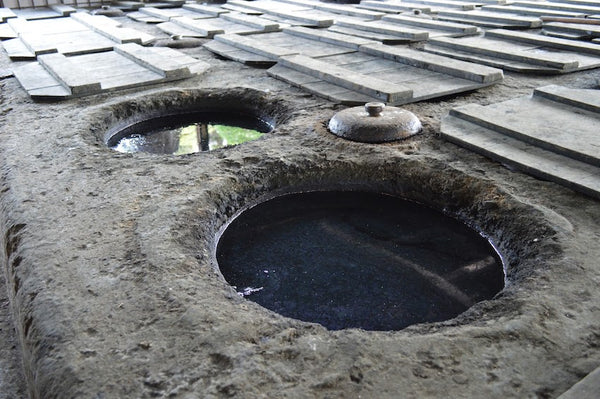cheap sulphur black
The Versatility and Benefits of Cheap Sulphur Black
In the world of textile dyeing, colorants play a pivotal role in enhancing the aesthetic appeal and marketability of fabrics. Among various dyeing agents, one that has garnered attention for its affordability and effectiveness is cheap sulphur black. This dye is particularly favored in industries where cost-efficiency is paramount, making it a go-to choice for many manufacturers.
Understanding Sulphur Black
Sulphur black is a type of dye that belongs to the sulphur dye group, known for its deep, rich black color. The dyeing process using sulphur black involves a reduction method, whereby the dye is transformed into a soluble form. This form then penetrates the fabric fibers, allowing for a vibrant and long-lasting coloration that withstands washing and abrasion. After the dyeing process, it is oxidized back to its insoluble form, locking the color within the fibers.
The appeal of sulphur black as a dye lies not only in its attractive pigment but also in its cost-effectiveness. It is significantly cheaper than many other dyes available in the market, such as reactive dyes or vat dyes. This affordability makes it an attractive option for large-scale textile manufacturing, where maintaining low production costs can significantly impact profit margins.
Applications Across Industries
Cheap sulphur black is extensively used across various sectors of the textile industry. It is commonly utilized for dyeing cotton, why it is often found in the production of denim, workwear, and other durable fabrics. The robust nature of sulphur black ensures that it meets the high demands of products that require resilience and longevity. Its popularity extends beyond textiles, as it can also be found in applications related to leather, paper, and even certain plastics.
Environmental Considerations
cheap sulphur black

While the economic benefits of cheap sulphur black are clear, it is essential to consider the environmental implications of its usage
. Sulphur dyes are generally considered less harmful than other synthetic dyes; however, the production and application must still comply with environmental regulations to minimize pollution. The shift towards sustainable practices in the textile industry has prompted manufacturers to explore more eco-friendly dyeing methods and treatments.It is worth noting that the recent advances in dyeing technology have led to the development of processes that utilize less water and energy, thus improving the overall sustainability of sulphur black dyeing. Manufacturers increasingly prioritize adopting innovative practices that reduce environmental footprints while maintaining efficiency and cost-effectiveness.
Quality Versus Cost
Choosing cheap sulphur black does not mean compromising quality. When properly applied, sulphur black yields vibrant colors that are less likely to fade with time. The depth of color achieved through this dye can make products more appealing to consumers, ultimately driving sales. However, ensuring that the dyeing process is conducted under stringent quality control measures is crucial. This not only ensures the optimal performance of the dye but also fosters consumer trust in the products.
When evaluating the cost-effectiveness of cheap sulphur black, manufacturers should also consider potential long-term savings. Durably dyed fabrics reduce returns due to color fading or washing discrepancies, translating into fewer losses and increased customer satisfaction.
Conclusion
Cheap sulphur black stands as a testament to the balance between cost efficiency and quality in the textile industry. Its widespread application across various sectors highlights its versatility and effectiveness. However, as the industry evolves, it is vital to approach the use of cheap sulphur black with an eye towards sustainability and environmental responsibility. By prioritizing eco-friendly practices alongside economical choices, manufacturers can ensure that they not only benefit from this affordable dye but also contribute positively to the world around them. Ultimately, the future of sulphur black dyeing looks promising, with opportunities for innovation paving the way for cleaner and more efficient processes.
-
The Timeless Art of Denim Indigo Dye
NewsJul.01,2025
-
The Rise of Sulfur Dyed Denim
NewsJul.01,2025
-
The Rich Revival of the Best Indigo Dye
NewsJul.01,2025
-
The Enduring Strength of Sulphur Black
NewsJul.01,2025
-
The Ancient Art of Chinese Indigo Dye
NewsJul.01,2025
-
Industry Power of Indigo
NewsJul.01,2025
-
Black Sulfur is Leading the Next Wave
NewsJul.01,2025

Sulphur Black
1.Name: sulphur black; Sulfur Black; Sulphur Black 1;
2.Structure formula:
3.Molecule formula: C6H4N2O5
4.CAS No.: 1326-82-5
5.HS code: 32041911
6.Product specification:Appearance:black phosphorus flakes; black liquid

Bromo Indigo; Vat Bromo-Indigo; C.I.Vat Blue 5
1.Name: Bromo indigo; Vat bromo-indigo; C.I.Vat blue 5;
2.Structure formula:
3.Molecule formula: C16H6Br4N2O2
4.CAS No.: 2475-31-2
5.HS code: 3204151000 6.Major usage and instruction: Be mainly used to dye cotton fabrics.

Indigo Blue Vat Blue
1.Name: indigo blue,vat blue 1,
2.Structure formula:
3.Molecule formula: C16H10N2O2
4.. CAS No.: 482-89-3
5.Molecule weight: 262.62
6.HS code: 3204151000
7.Major usage and instruction: Be mainly used to dye cotton fabrics.

